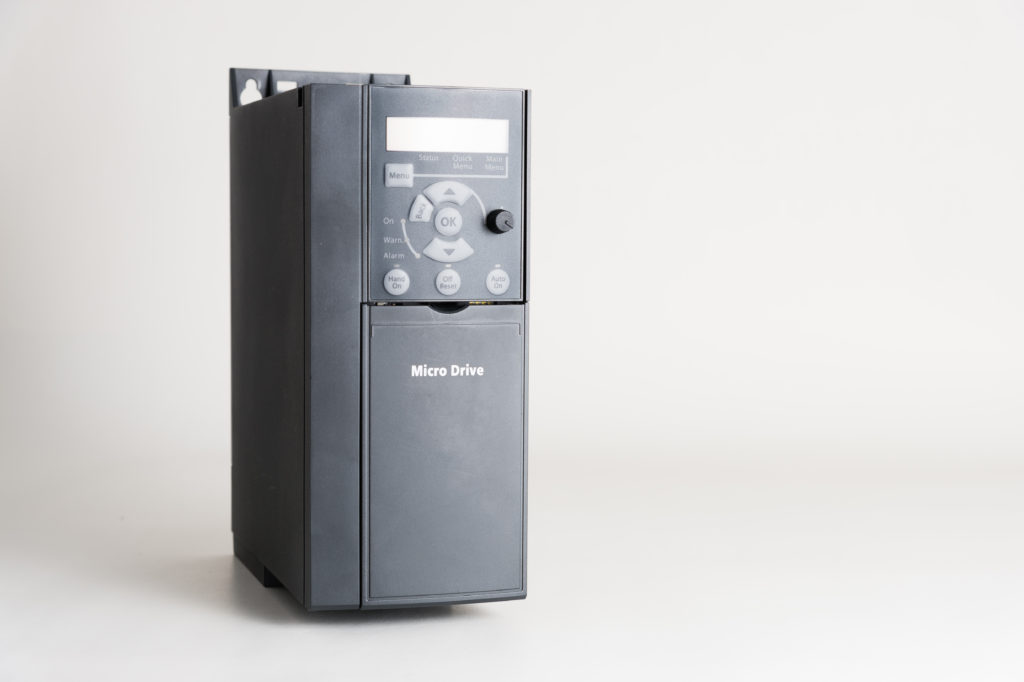There are many words used to describe electric motor controls. Terms such as variable frequency drive, adjustable speed drive, soft start, servo and stepper are all used to describe a certain function a motor control can have or generalize its operation. Today we will focus on one descriptor sometimes used when referencing a motor control – Inverter.
Why the term Inverter?
To properly understand why a Motor Control is sometimes called an inverter one must first understand some basic principles behind this type of motor control.
The basic function of an electric motor is taking electrical energy from a supply source – such as the AC current coming from an electrical outlet – and converting it into mechanical energy that can do physical work. A motor control helps this process by applying a level of safety, efficiency and control to this process. The main task of motor control or drive devices is to take the raw AC voltage coming from the supply source and convert it into a more stable and manageable form so that the motor can be controlled effectively.
The first job that the Motor Controls performs is taking the AC power and converting it into DC power by a process called rectification. This usually is using a specialized circuit of arranged diodes called a bridge. Once the current is converted it is pushed through a series of capacitors to smooth it out. Now the power is useable for the next step in the process, converting the DC power back to AC for use in an AC motor. This process, the opposite of rectification is called inversion, which is where we get the term “Inverter”. Once the drive can supply clean, variable, AC current it now can be used to control speed and torque of the motor efficiently.
If you have any trouble with any of your motor controls give us a call! Also be sure to visit us online at www.gesrepair.com or call us at 1-877-249-1701 to learn more about our services. We’re proud to offer Surplus, Complete Repair and Maintenance on all types of Industrial Electronics, Servo Motors, AC and DC Motors, Hydraulics and Pneumatics. Please subscribe to our YouTube page and Like Us on Facebook! Thank you!
